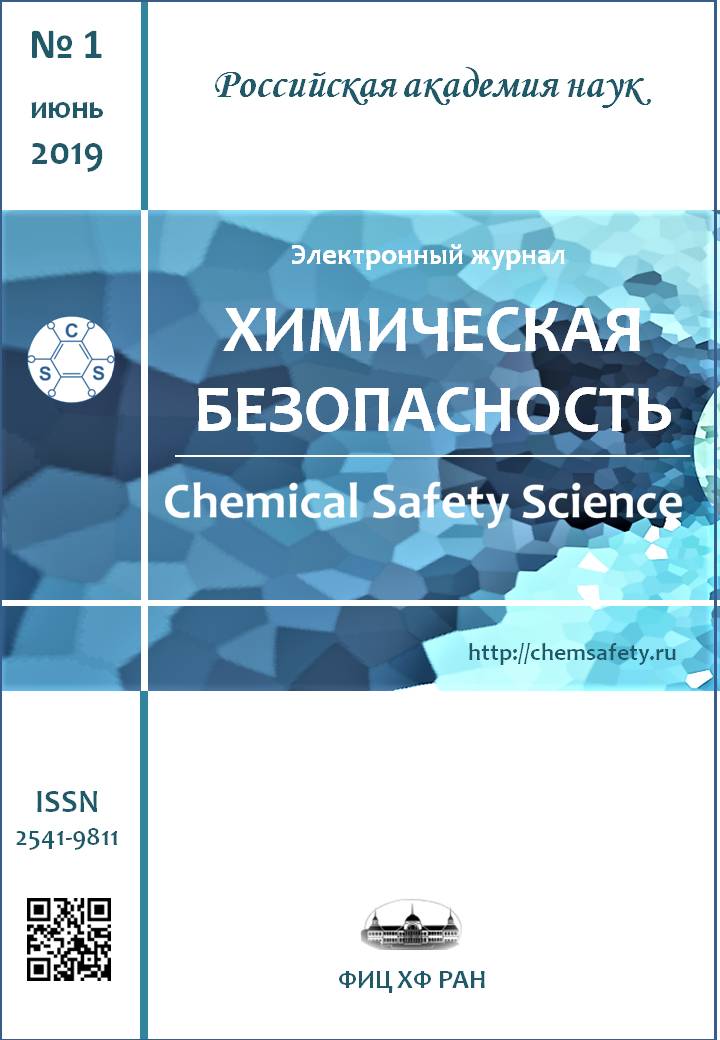SURVEY ON CURRENT SITUATION CONCERNING POLYCHLORINATED BIPHENYLS IN THE KYRGYZ REPUBLIC
Abstract
The survey summarizes information on the current situation in the Kyrgyz Republic (KR) with regard to polychlorinated biphenyls (PCBs) – persistent organic pollutants (POPs) – the most dangerous chemical compounds that adversely affect human health and the environment and, according to the Stockholm Convention on POPs, need to be completely eliminated. Sources of PCBs in the KR are previously imported industrial products, i.e. electrical facilities, transformer oils, paints, various lubricants, etc. According to the National Implementation Plan of the Stockholm Convention by Kyrgyzstan, an inventory of PCB-containing equipment has been conducted in the Kyrgyz Republic in 2006-2015. The results of inventory are summarized and examined critically. It is emphasized that at the moment the Kyrgyz Republic has no possible way of exporting PCB-containing equipment and oils to other countries for disposal, moreover, a problem of organizing a central warehouse for temporary storage of hazardous waste has not been solved yet. The necessity of making decisions at the government level referring to the disposal of PCB-containing waste in the KR is underlined. To this end, it would be advisable to consider exclusively options for using technologies of unburned disposal of POPs-containing waste, instead of using a more costly and less environmentally friendly method of waste incineration.
References
Stockholm Convention on Persistent Organic Pollutants. http://chm.pops.int/Home/tabid/2121/Default.aspx (accessed 20.04.2019).
Zapevalov M.A. // Him. bezop. 2018. V. 2. No. 2. P. 295 [in Russian]. DOI: 10.25514/CHS.2018.2.14123.
On ratification of Stockholm Convention on Persistent Organic Pollutants of May 22, 2001. Signed by the Kyrgyz Republic on May 16, 2002. Law of the Kyrgyz Republic of July 19, 2006, No. 114 [in Russian].
National Plan on Implementation of Stockholm Convention on Persistent Organic Pollutants by the Kyrgyz Republic. Approved by Government decree of the Kyrgyz Republic of July 3, 2006, No. 371-r [in Russian].
Zanaveskin L.N., Averyanov V.A. // Uspekhi khimii [Russian Chemical Reviews]. 1998. V. 67. No. 8. P. 788 [in Russian].
Yufit S.S. Poisons around us. Lecture course. M.: James, 2001 [in Russian].
Boyle R.H., Hignland J.H. // Environment. 1979. V. 21. No. 5. P. 6.
Kluyev N.A., Brodsky E.S. Determination of polychlorinated biphenyls in the environment and biota. Polychlorinated biphenyls. Superecotoxicants of the XXI century. Inf. bulletin No. 5. М.: VINITI, 2000. P. 31 [in Russian].
Hygienic Criteria of the State of Environment. Protocol No. 2. Polychlorinated Biphenyls and Triphenyls. Joint publication of UN Chemicals and World Health Organisation, Geneva, 1980.
http://tailing.in.kg (assessed 20.04.2019).
Basel Convention. http://www.basel.int/Home/tabid/2202/Default.aspx (accessed 20.04.2019).
On Actions to Protect the Environment and Human Health from Adverse Impacts of Certain Hazardous Chemicals and Pesticides. Government resolution of the Kyrgyz Republic of July 27, 2001, No. 376 [in Russian].
On Procedure for Conducting Inspections of Business Actors. Law of the Kyrgyz Republic of May 25, 2007, No. 72 [in Russian].
On Approval of Checklist Forms of the State Environmental and Technical Safety Inspectorate under the Government of the Kyrgyz Republic. Order of Ministry of Economy of the Kyrgyz Republic of June 22, 2016, No. 169 and Order of the State Environmental and Technical Safety Inspectorate under the Government of the Kyrgyz Republic of May 31, 2016, No. 239 [in Russian].
Research study on Stakeholders’ Awareness of Safety of PCBs Management under UNDP/GEF project “PCBs Management and Disposal in Kyrgyzstan”.
Data on electric transformers. UNDP/GEF project “PCBs Management and Disposal in Kyrgyzstan”.
Petrlik J. Global NGOs Community and Chemical Conventions with a Special Reference on Stockholm Convention. Czech Republic: Arnika Association, 2004.
Disposal of Bulk Quantities of Obsolete Pesticides in Developing Countries. United Nations Food and Agriculture Organization, 1996.
Appropriate Technologies for the Treatment of Scheduled Wastes. Review Report Number 4. Environment Canada, 1997.
U.S. Army Chemical Demilitarization and Remediation Activity. Delivery Order Number 136, Combined 3rd & 4th Quarterly Report, U.S. Army, 1996.
Schwinkendort W., McFee J. et al. Alternatives to Incineration. U.S. Department of Energy, Office of Technology Department, 1995.
Review of Emerging, Innovative Technologies for the Destruction and Decontamination of POPs and the Identification of Promising Technologies for Use in Developing Countries. The Scientific and Technical Advisory Panel of the GEF, UNEP, 2003.
Copyright (c) 2019 O. V. Pechenyuk

This work is licensed under a Creative Commons Attribution-NonCommercial 4.0 International License.












